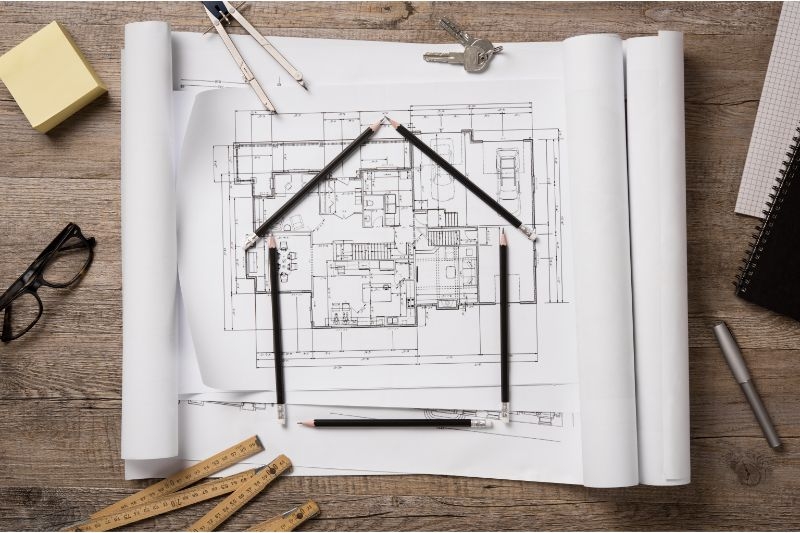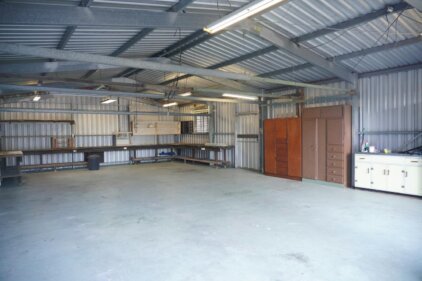Setting a Budget for Your Home Renovation Project
Before you dive into the specifics of your renovation, it’s essential to establish a realistic budget. This will help you make informed decisions and avoid costly surprises down the line. Start by evaluating your financial situation, including any savings or financing options you have available.
Next, research the average costs of different renovation projects in your area. This will give you a good starting point for estimating your budget. Remember to factor in contingency funds to cover unexpected expenses that may arise during the renovation process.
Identifying the Key Areas for Renovation Based on Your Priorities
With your budget in mind, it’s time to prioritise the areas of your home that need the most attention. Consider factors such as:
- Functionality: Which rooms or spaces are not meeting your current needs? Identify areas where improvements could significantly enhance your daily life.
- Aesthetics: Which rooms or features are in the greatest need of an update or facelift? Prioritise these to create a cohesive, visually appealing look throughout your home.
- Return on Investment: If you’re planning to sell your home in the future, focus on renovations that will increase the property’s value and appeal to potential buyers.
By carefully evaluating your priorities, you can create a renovation plan that maximises the impact within your budget.
Maximising Impact Through Cost-Effective Upgrades and Improvements
Once you’ve identified your renovation priorities, it’s time to explore cost-effective ways to achieve your desired results. This might involve:
- Focusing on High-Impact Areas: Concentrate your budget on the rooms or features that will have the most significant visual and functional impact, such as the kitchen, bathroom, or living room.
- Leveraging DIY Opportunities: Consider taking on some of the less complex renovation tasks yourself, such as painting, tiling, or light carpentry, to save on labour costs.
- Sourcing Affordable Materials: Research alternative suppliers, online marketplaces, or salvage yards to find high-quality materials at a fraction of the retail price.
- Repurposing Existing Elements: Get creative by repurposing or refurbishing existing fixtures, furniture, or architectural features, rather than replacing them entirely.
By adopting a strategic approach to your renovation, you can maximise the impact of your investment and create a beautiful, functional home that aligns with your budget.
Choosing the Right Materials and Finishes for a High-Impact Look on a Budget
When it comes to materials and finishes, the choices you make can have a significant impact on the overall look and feel of your renovated spaces. To achieve a high-impact look on a budget, consider the following strategies:
- Opt for Versatile, Timeless Finishes: Choose materials like subway tiles, engineered wood flooring, or neutral-toned paint that can easily be combined and updated over time.
- Explore Affordable Alternatives: Look for budget-friendly options that mimic the appearance of more expensive materials, such as laminate countertops that resemble natural stone or luxury vinyl plank flooring that emulates hardwood.
- Prioritise High-Traffic Areas: Invest in durable, high-quality materials for the most heavily used rooms or surfaces, such as the kitchen or bathroom, to ensure long-lasting performance and value.
- Incorporate Accent Pieces: Use more affordable decorative elements, like throw pillows, artwork, or lighting fixtures, to add pops of colour and personality throughout your home.
By carefully selecting materials and finishes that balance style, functionality, and cost, you can create a visually stunning renovation without exceeding your budget.
DIY vs. Hiring Professionals: Weighing the Pros and Cons
When it comes to tackling your home renovation project, you’ll need to decide whether to take on some tasks yourself or hire professional contractors. Both options have their advantages and disadvantages, and the right choice will depend on your skills, available time, and budget.
Doing It Yourself (DIY):
- Pros: Potential cost savings, hands-on learning experience, and the satisfaction of completing the work yourself.
- Cons: Increased time commitment, risk of mistakes or subpar workmanship, and the need to acquire specialised tools or skills.
Hiring Professionals:
- Pros: Expertise, efficient project management, and access to high-quality materials and equipment.
- Cons: Higher labour costs, less control over the process, and the need to coordinate with multiple contractors.
Carefully evaluate your capabilities, the complexity of the tasks, and your budget to determine the best approach for your home renovation project. A balanced mix of DIY and professional work can often be the most cost-effective solution.
Budget-Friendly Alternatives to Consider for Major Renovation Projects
For larger-scale renovation projects, such as a kitchen or bathroom overhaul, the costs can quickly add up. In these cases, it’s essential to explore budget-friendly alternatives that can still deliver a high-impact result. Consider the following options:
- Refacing or Resurfacing Existing Cabinetry: Instead of replacing your kitchen or bathroom cabinets entirely, opt for a refacing or resurfacing solution, which involves updating the cabinet doors and drawers while retaining the existing cabinet boxes.
- Refinishing or Resurfacing Countertops: Explore cost-effective options like laminate, solid surface, or even concrete countertops, which can provide a fresh, modern look at a fraction of the cost of natural stone.
- Updating Fixtures and Hardware: Refresh the look of your kitchen or bathroom by replacing outdated fixtures, faucets, and hardware with more affordable, yet stylish, alternatives.
- Incorporating Modular or Semi-Custom Elements: Look into modular or semi-custom design solutions, such as prefabricated vanities or modular kitchen systems, which can provide a customised look at a lower cost than fully custom-built options.
By exploring these budget-friendly alternatives, you can achieve a high-impact renovation without stretching your budget to the limit.
Tips for Managing Your Home Renovation Project Within Budget and Timeline
Maintaining control over your home renovation project’s budget and timeline is crucial to ensuring its success. Here are some tips to help you stay on track:
- Develop a Detailed Project Plan: Create a comprehensive timeline, task list, and budget breakdown to keep your renovation on schedule and within your financial constraints.
- Communicate Regularly with Contractors: Establish clear expectations, provide regular feedback, and work collaboratively to address any issues that arise.
- Prioritise and Stick to Your Budget: Continuously review your budget and make adjustments as needed, focusing on your highest-priority items first.
- Build in Contingency Funds: Allocate a portion of your budget to cover unexpected expenses, such as hidden structural issues or material price fluctuations.
- Leverage Your DIY Skills: Take on tasks you’re comfortable with to save on labour costs, but don’t overextend yourself and risk costly mistakes.
- Explore Financing Options: Investigate home equity loans, personal loans, or credit card options to help spread the cost of your renovation over time.
By implementing these strategies, you can maintain control over your home renovation project and ensure it stays within your budget and timeline.
Showcasing the Impact of Your Home Renovation on a Budget
Once your home renovation is complete, it’s time to showcase the transformation and the impact of your strategic approach. Share before-and-after photos on social media, highlighting the key changes and the creative ways you maximised your budget.
Consider hosting a small housewarming party or open house to celebrate your newly renovated home and share your renovation journey with friends, family, and neighbours. This not only allows you to showcase your hard work but also provides an opportunity to gather valuable feedback and recommendations for future projects.
Conclusion: Achieving Your Dream Home Without Breaking the Bank
Renovating your home on a budget may seem like a daunting task, but with a strategic approach, it’s entirely possible to achieve your dream living space without breaking the bank. By carefully prioritising your renovation projects, making cost-effective upgrades, and managing your project efficiently, you can create a beautiful, functional home that aligns with your financial constraints.





